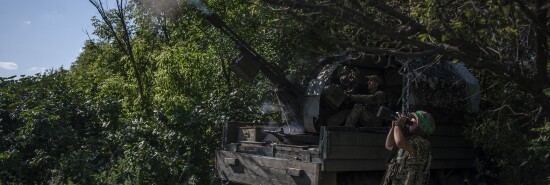
Ukraine begins reconnaissance-in-force operations against Russian defenses
Tom Rogan
Video Embed
Suggesting that an anticipated counteroffensive may begin this week, Ukraine is testing Russian front lines. These actions appear to be “reconnaissance-in-force” operations centered on southeastern Ukraine’s Donetsk oblast and the city of Bakhmut. Russia’s Wagner Group mercenary force recently seized Bakhmut. Control over the city retains significant psychological value for both sides.
Russian and Ukraine reports differ on the success of the actions thus far, but it is clear that Ukrainian efforts have made some advances into Russian-held territory.
NASA TARGETING MONDAY LAUNCH FOR ISS RESUPPLY MISSION
The British Army, which retains the Ukrainian military and political establishment’s greatest trust, explains that “reconnaissance in force is used to induce an enemy to disclose the location, size, strength, disposition or the intention of their force by making them respond to offensive activity.” The United States shares a similar definition of and appreciation for these actions. The 82nd Airborne and 1st Marine Division successfully used reconnaissance-in-force operations to identify insurgent positions in the Iraqi city of Fallujah before two offensives in 2004.
Ukraine’s reconnaissance actions are likely associated with preliminary movements to offensive launching positions. Kyiv’s strategy here appears to be twofold.
First, to keep Russian mobile reserve forces off balance as to where Ukraine will focus its offensive lines of effort. This uncertainty will drain morale and foster stress on the part of Russian front-line forces in particular. There is also almost certainly some deception attached to Ukraine’s new actions. Ukrainian commanders will want to mislead their Russian counterparts into exactly where and how they will launch follow-on attacks.
The second objective seems focused on generating battlefield intelligence about where different Russian forces are variably dug in, motivated, and best supported by rear forces. If Ukraine can establish weak points, it can throw its forces at those points. The diversity of these reconnaissance actions indicates the main counteroffensive is quickly approaching. After all, excessive ensuing delay would allow Russian forces to better prepare for further attacks.
Russia faces other problems, however.
Ukraine-aligned saboteurs continue to spread havoc inside Russia with strikes at logistics nodes. Adding to President Vladimir Putin’s embarrassment, an eccentric group of Russian neo-Nazi-associated fighters appears to have temporarily seized a Russian hamlet, Novaya Tavolzhanka, near Ukraine’s northeastern border. The governor of Belgorod oblast declared on Monday that Russian forces were not yet in control of the hamlet. And tensions between the Wagner Group and Russian military continue to boil over. Wagner has captured a Russian officer and apparently beat him. It accuses the officer of mining roads that the group has been using.
Put simply, Ukraine retains the strategic initiative and seems set to exploit Russian vulnerabilities in the coming days. Next, probably, look for Ukrainian air and artillery strikes on Russian command and control and air combat centers behind the front lines.
